In this article, you will discover the Beginner’s Guide to Tea Brewing Methods. Whether you’re new to the world of tea or looking to enhance your brewing skills, we’ve got you covered. From the art of steeping to choosing the right temperature and steeping time, this guide will walk you through the basics and help you create a delightful cup of tea that suits your taste buds perfectly. So grab your favorite tea leaves and let’s embark on an adventure to explore the wonderful world of tea brewing methods!
Introduction
Tea brewing is the process of extracting the flavors, aromas, and health benefits from tea leaves by steeping them in hot water. It is a time-honored practice that has been enjoyed by cultures around the world for centuries. Brewing tea not only creates a warm and comforting beverage, but it also allows you to explore the vast array of flavors and aromas that different teas have to offer. Whether you’re a tea connoisseur or just starting to dabble in the world of tea, understanding the art of tea brewing is essential to achieving the perfect cup every time.
What is Tea Brewing?
Tea brewing is the art of steeping tea leaves in hot water to extract their flavors, aromas, and healthful properties. It involves carefully selecting the right type of tea, determining the correct water temperature and infusion time, and using the appropriate tea-to-water ratio. By understanding and following these essential steps, you can unlock the full potential of the tea leaves and create a delightful cup of tea.
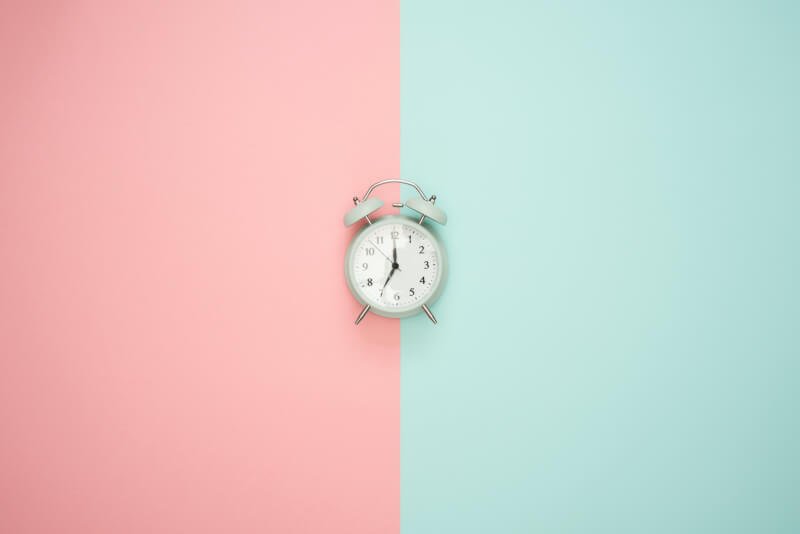
Why is it Important?
Brewing tea at home allows you to have full control over the quality and taste of your tea. It gives you the freedom to experiment with different types of tea and tailor your brewing process to suit your personal preferences. When you brew tea yourself, you can choose high-quality tea leaves and avoid any artificial additives or preservatives often found in pre-packaged tea bags. Additionally, brewing your tea at home can be a more cost-effective option in the long run, as loose tea leaves can often be reused for multiple infusions. Ultimately, mastering the art of tea brewing can elevate your tea-drinking experience and bring you closer to the rich traditions and history associated with this beloved beverage.
Benefits of Brewing Tea at Home
Brewing tea at home offers numerous benefits, from the convenience of enjoying a cup of tea whenever you desire to the ability to adjust the strength and flavor to your liking. By brewing your tea at home, you have the freedom to explore a wide variety of tea options, ranging from delicate white teas to robust black teas, and everything in between. You can experiment with different tea-to-water ratios, infusion times, and water temperatures, allowing you to discover your personal preference for each tea variety. Additionally, brewing tea at home can be a relaxing and mindful practice, allowing you to slow down and savor the process of preparing and enjoying a cup of tea.
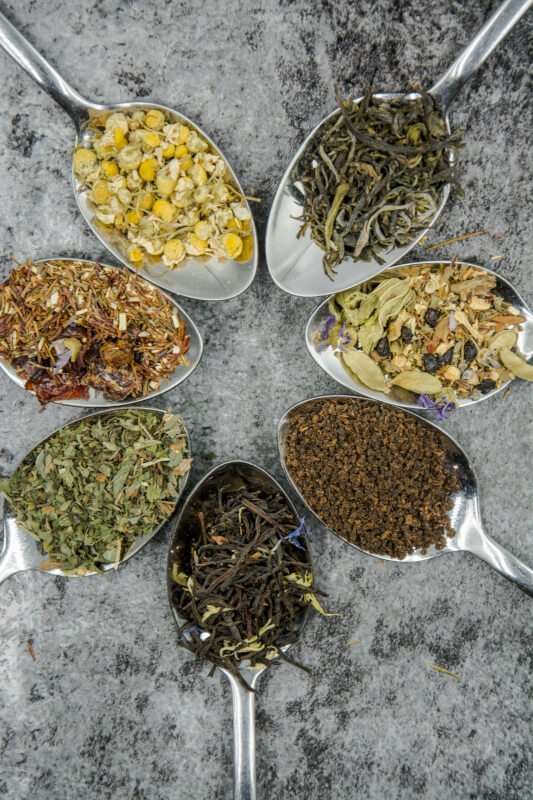
Tea Varieties
Understanding different types of tea
To brew tea effectively, it is important to understand the different types of tea available. The primary tea categories include black tea, green tea, oolong tea, white tea, and herbal tea. Each type of tea undergoes different processing methods, resulting in distinct flavors and characteristics. Black tea is fully oxidized, giving it a bold and robust flavor, while green tea is unoxidized and offers a fresh and grassy taste. Oolong tea falls between black tea and green tea, with a wide range of flavors and complexities. White tea is the least processed of all teas, providing a delicate and subtle flavor profile. Herbal teas, on the other hand, are not made from the Camellia sinensis plant and can come in a variety of flavors, including chamomile, peppermint, and hibiscus.
Choosing the right tea for your taste
When selecting tea to brew, consider your personal taste preferences and the occasion for which you are brewing. If you enjoy bold and strong flavors, black teas like Assam or Ceylon may be your go-to options. Green teas such as sencha or matcha provide a fresh and vegetal taste that is perfect for those looking for a lighter and more refreshing cup. Oolong teas present a wide range of flavors, from floral and fruity to nutty and roasted, offering something for everyone. White teas are delicate and subtle, making them an excellent choice for those who prefer a milder tea experience. Lastly, herbal teas come in a wide range of flavors and can be selected based on your desired taste profile or potential health benefits.
Essential Equipment
Teapot or teacup
A teapot or teacup is an essential tool for brewing tea. Teapots come in various sizes and materials, such as glass, ceramic, or cast iron. If you prefer brewing single cups of tea, a teacup with an infuser can be a practical option. It is essential to choose a teapot or teacup that is suitable for the type of tea you intend to brew. For example, delicate green teas may require a teapot with a built-in strainer to prevent the leaves from oversteeping.
Tea kettle
A tea kettle is used to heat water for brewing tea. Electric kettles are a popular choice as they quickly heat the water to the desired temperature. Stovetop kettles, on the other hand, provide a more traditional experience. When selecting a tea kettle, consider its capacity, material, and heat conductivity. Stainless steel kettles are durable and easy to clean, while copper kettles are prized for their excellent heat conductivity.
Infusers and strainers
Infusers and strainers are used to separate the tea leaves from the liquid after steeping. Infusers are typically small mesh or perforated containers that hold the tea leaves while allowing water to flow through. They are commonly used for loose tea leaves or herbs. Strainers, on the other hand, are used when brewing tea directly in a teapot or teacup without an infuser. They help remove any loose tea leaves or particles, ensuring a smooth and enjoyable tea-drinking experience.
Thermometer or timer
Controlling water temperature and infusion time is crucial in tea brewing. A thermometer can help you achieve the proper temperature for each tea type, as temperature variations can significantly impact the taste and aroma of the brewed tea. Alternatively, using a timer can assist in achieving the desired infusion time, ensuring that your tea is brewed to perfection every time.
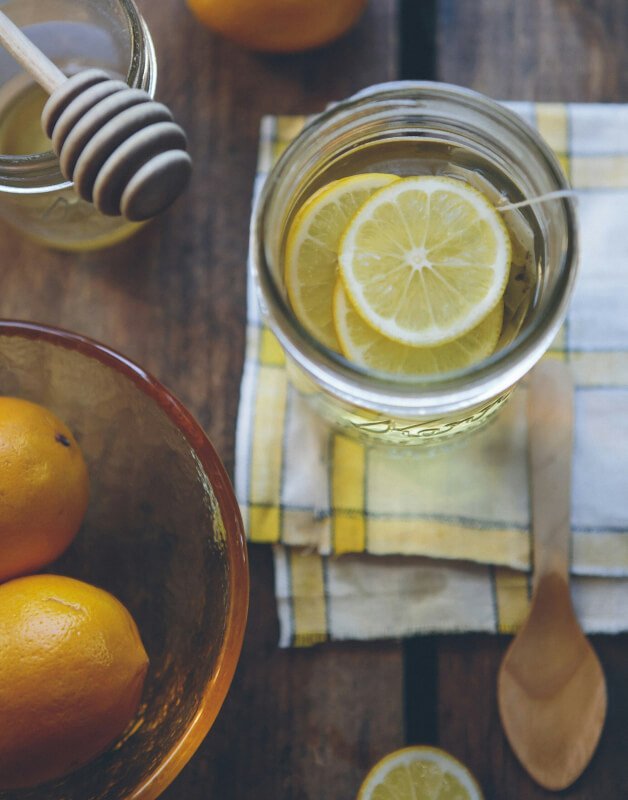
Water Temperature
Importance of water temperature in tea brewing
Water temperature plays a crucial role in tea brewing, as it affects the extraction of flavor compounds from the tea leaves. Different types of tea require specific water temperatures to unlock their optimal flavor profiles. Brewing tea with water that is too hot can result in a bitter and astringent taste, while using water that is too cold may result in a weak and flavorless brew. Thus, understanding the ideal water temperature for each tea type is essential for a successful brewing process.
Different temperature ranges for various tea types
As a general guideline, black teas are best brewed with water temperatures between 195°F (90°C) and 205°F (96°C). Green teas and white teas, on the other hand, are more delicate and require lower water temperatures. Green teas typically need water temperatures between 160°F (71°C) and 180°F (82°C), while white teas benefit from even lower temperatures ranging from 150°F (66°C) to 160°F (71°C). Oolong teas fall in between, typically requiring water temperatures around 180°F (82°C) to 200°F (93°C). Herbal teas are more forgiving and can be brewed with boiling water, around 212°F (100°C). It is essential to note that these temperature ranges serve as general guidelines, and preferences may vary depending on the specific tea and personal taste.
Infusion Time
Determining the correct steeping time
The infusion time refers to the duration for which the tea leaves are steeped in hot water. It significantly impacts the flavor, aroma, and strength of the brewed tea. Steeping tea for too short a period may result in a weak and underwhelming cup, while steeping for too long can lead to bitterness and astringency. Determining the correct steeping time is crucial to achieve the desired balance of flavors.
Factors that affect infusion time
Several factors can influence the infusion time, including the tea variety, leaf size, water temperature, and personal preference. Generally, smaller tea leaves or tea leaves with a higher surface area will infuse faster than larger leaves. Additionally, certain teas, such as green teas, may turn bitter if steeped for too long, while others, like black teas, can withstand longer infusion times without compromising flavor.
Adjusting steeping time for stronger or weaker tea
To adjust the strength of your tea, you can experiment with the steeping time. If you prefer a stronger cup, you can extend the infusion time, allowing more flavor compounds to be extracted from the tea leaves. Conversely, if you prefer a weaker cup, you can shorten the steeping time. Remember that adjusting the infusion time should be done gradually to prevent overextraction or underextraction of flavors.
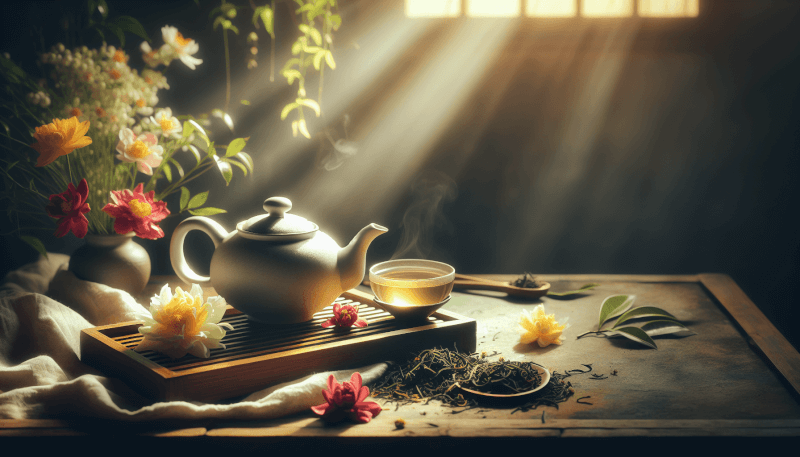
Proper Measurements
Measuring tea leaves
The amount of tea leaves used in brewing directly impacts the strength and flavor of the resulting tea. While personal preferences may vary, a general guideline is to use one teaspoon of loose tea leaves per cup of water (8 ounces). However, it is essential to consider the tea’s density, size, and personal taste when determining the appropriate amount of tea to use.
Ratio of tea to water
The tea-to-water ratio refers to the proportion of tea leaves to water in your brewing vessel. It greatly affects the strength of the tea. A common ratio is one teaspoon of tea leaves for every 8 ounces of water. However, you can adjust the ratio to suit your preference. For a stronger cup, you can increase the amount of tea leaves, while for a milder cup, you can reduce the amount.
Using the right amount for different tea varieties
The tea-to-water ratio can vary depending on the type of tea being brewed. For example, black teas typically require a higher ratio of tea leaves to water to achieve their full-bodied flavor. Green teas, on the other hand, benefit from a lower tea-to-water ratio to prevent overpowering the delicate flavors. It is essential to experiment with different ratios to find the perfect balance for each tea variety and your personal taste.
Tea Brewing Techniques
Standard brewing method
The standard brewing method involves steeping tea leaves in hot water using a teapot or infuser. Begin by heating the water to the appropriate temperature for your chosen tea type. Measure the desired amount of tea leaves and place them in the infuser or directly in the teapot. Pour hot water over the tea leaves and let them steep for the recommended infusion time. Once the desired steeping time has elapsed, remove the tea leaves or infuser, and serve the tea. Adjust the brewing parameters, such as tea-to-water ratio and steeping time, based on your taste preferences and the specific tea variety.
Gongfu brewing method
The Gongfu brewing method, originating from Chinese tea culture, is a more intricate and ceremonial approach to tea brewing. It involves using a small teapot or gaiwan and a higher tea-to-water ratio. The Gongfu method emphasizes multiple short infusions to extract the full flavor and complexity of the tea leaves. The tea leaves are steeped for a brief period, usually starting at a few seconds and gradually increasing with each subsequent infusion. The resulting brews are poured into small cups and savored, allowing you to appreciate the evolving flavors and aromas of the tea over multiple infusions.
Matcha preparation
Matcha, a powdered form of green tea, requires a specific preparation process. Start by sifting the matcha powder to remove any clumps. Measure the desired amount of matcha powder into a bowl. Heat water to approximately 160°F (71°C) and pour a small amount over the matcha powder. Use a bamboo whisk or a small whisk to vigorously whisk the matcha and water until a frothy consistency is achieved. Gradually add more hot water while continuing to whisk until your desired strength and frothiness are achieved. Serve the matcha immediately and enjoy its vibrant green hue and rich flavor.
Cold brewing tea
Cold brewing is a popular method for steeping tea using cold or room temperature water. It results in a refreshing and smooth brew with less bitterness and astringency. To cold brew tea, simply place tea leaves in a container filled with cold or room temperature water and let it steep for an extended period, typically between 4 to 12 hours. As cold brewing is a slow extraction process, it allows for a more delicate and subtle flavor profile. Once the desired steeping time has elapsed, strain the tea leaves and enjoy a refreshing cup of cold-brewed tea.
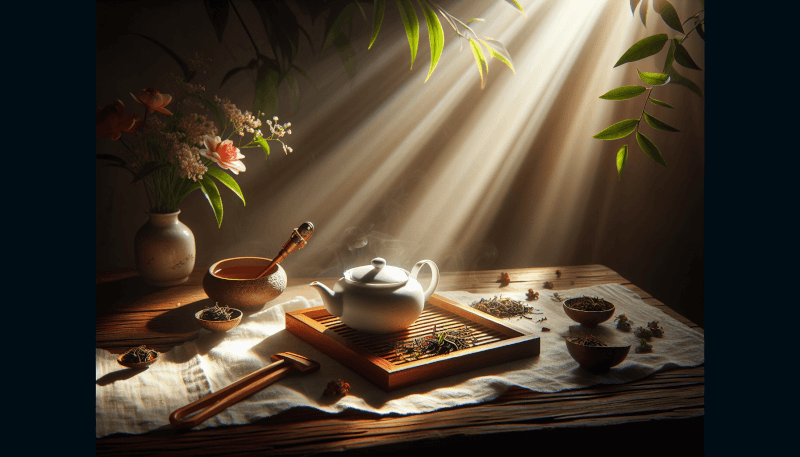
Additional Flavorings
Enhancing tea with herbs and spices
Adding herbs and spices to your tea can elevate its flavor profile and create unique taste experiences. For example, you can enhance a black tea with a dash of cinnamon or cloves for a cozy and aromatic cup. Infusing a floral oolong tea with rose petals or lavender can create a soothing and fragrant brew. Experimenting with different combinations of herbs and spices allows you to tailor your tea to your liking and explore new and exciting flavor combinations.
Adding fruits or citrus
Fruits and citrus are another delightful way to add a burst of flavor to your tea. Slices of fresh lemon or orange can brighten the taste of a black tea or complement the grassy notes of a green tea. Additionally, you can create fruit-infused teas by adding fresh or dried fruit pieces to your tea leaves during the brewing process. This results in a naturally sweet and fruity cup of tea, perfect for those seeking a refreshing and vibrant flavor experience.
Sweeteners and milk options
Sweeteners and milk can be added to tea to enhance its taste and texture. Common sweeteners include sugar, honey, or agave syrup. Adding a touch of sweetness can balance out any bitterness and provide a more enjoyable drinking experience. Milk or cream can be added to black teas, such as English Breakfast or Earl Grey, to create a creamy and comforting cup. Alternatively, non-dairy milk options, such as almond or soy milk, can be used for a vegan-friendly twist on traditional tea recipes. Experiment with different sweeteners and milk options to find your perfect cup of tea.
Tea Serving and Presentation
Choosing teaware
Teaware can greatly enhance the presentation and enjoyment of tea. Selecting the right teacups, teapots, and accessories can create a visually appealing and immersive tea-drinking experience. Teacups can range from delicate and elegant porcelain cups to rustic and earthy ceramic mugs. Teapots come in various shapes, sizes, and materials, each offering a distinct aesthetic and brewing experience. Accessories such as tea trays, tea tongs, and tea towels can add a touch of elegance and practicality to your tea-serving setup. Consider your personal style and the overall ambiance you wish to create when choosing your teaware.
Tea serving etiquette
Tea serving etiquette varies across cultures, but there are a few general guidelines to keep in mind. When serving tea, it is customary to hold the teapot or cup by the handle or the rim. Pour tea for others before serving yourself, and offer the tea cup with your right hand. If you are hosting a tea gathering or ceremony, it is polite to offer a selection of teas to cater to different tastes and preferences. Finally, take the time to observe and appreciate the tea’s color, aroma, and taste, as tea drinking is not merely about consuming the beverage but also about immersing oneself in the experience.
Presentation and garnishing
Enhancing the visual presentation of your tea can elevate the overall experience. Garnishing your tea with a sprig of fresh herbs, a slice of citrus, or a delicate flower can add a touch of elegance and create a visually pleasing cup. Using a glass teapot or teacup allows you to appreciate the beautiful colors and swirling patterns of the brewed tea. Paying attention to the presentation of your tea can not only delight the senses but also demonstrate your care and attention to detail.
Troubleshooting
Common tea brewing problems
While tea brewing is a relatively simple process, various issues can arise that may affect the quality of your tea. Some common brewing problems include oversteeping, understeeping, or steeping at the wrong temperature, resulting in a bitter or weak tea. Using low-quality tea leaves or improper storage can also impact the flavor and aroma of the brewed tea. It is essential to be aware of these potential pitfalls and take steps to address them.
Solutions and tips for better brewing
To avoid oversteeping, carefully follow the recommended infusion times for each tea variety. If you find your tea tasting bitter or astringent, consider using cooler water or shortening the steeping time. For weak or flavorless tea, increase the amount of tea leaves or extend the infusion time. Using high-quality tea leaves and storing them properly in airtight containers away from moisture, heat, and strong odors can help preserve their flavor and aroma. Lastly, don’t be afraid to experiment and adjust your brewing parameters to suit your personal taste preferences and to make the perfect cup of tea for you.
In conclusion, tea brewing is an art and a practice that can be enjoyed by tea enthusiasts of all levels. With a basic understanding of different tea varieties, essential equipment, water temperature, infusion time, and proper measurements, you can confidently brew a cup of tea that suits your taste and preferences. Additionally, experimenting with brewing techniques, flavorings, and presentation can further enhance your tea-drinking experience. So grab your favorite tea leaves, a teapot or teacup, and start brewing your own perfect cup of tea today!

